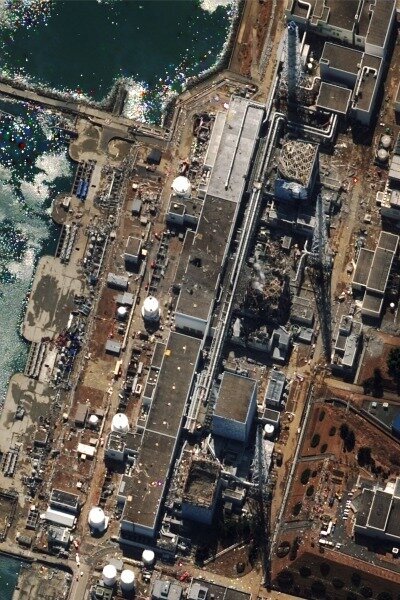During the first two weeks of the crisis, some of the most significant releases of radioactivity from Fukushima Daiichi appear to have come from the spent-fuel pool on the top floor of Unit No. 4, though officials at the International Atomic Energy Agency have also been concerned about the pool for No. 3.
In planning for accident scenarios, "we have placed too much emphasis on the release of radioactivity from the reactor itself and not enough on the spent fuel stored on the site," says Elmer Lewis, professor emeritus of nuclear engineering at Northwestern University in Evanston, Ill.
None of the plant's six pools were filled to capacity with spent fuel, notes David Lochbaum, a nuclear engineer who heads the Nuclear Safety Project at the Union of Concerned Scientists, a nuclear watchdog group in Washington. Yet radiation from exposed spent fuel in No. 4, and perhaps in No. 3, has forced workers to evacuate several times during their lengthy attempt to bring the plant under control.
In Japan, spent-fuel assemblies ultimately are removed from power plants in anticipation of reprocessing and reuse. In the US, however, the government has long forsworn reprocessing. In addition, no long-term, central storage site for spent fuel has been approved. This leaves nuclear power plants with nowhere to send spent nuclear rods. Many utilities have received approval to cram more spent-fuel assemblies into their pools than the pools were originally expected to handle.
As of 2010, US nuclear utilities were storing 169,696 fuel assemblies – at 600 to 1,500 pounds apiece, depending on reactor type – in spent-fuel pools, according to estimates from the Electric Power Research Institute. Another 51,585 assemblies are encased in concrete casks and stored on-site but outside, an interim solution many see as preferable to filling pools initially designed as temporary storage.
The most important lesson from Japan so far, MIT's Professor Golay says, "is to finally get serious about nuclear fuel."





